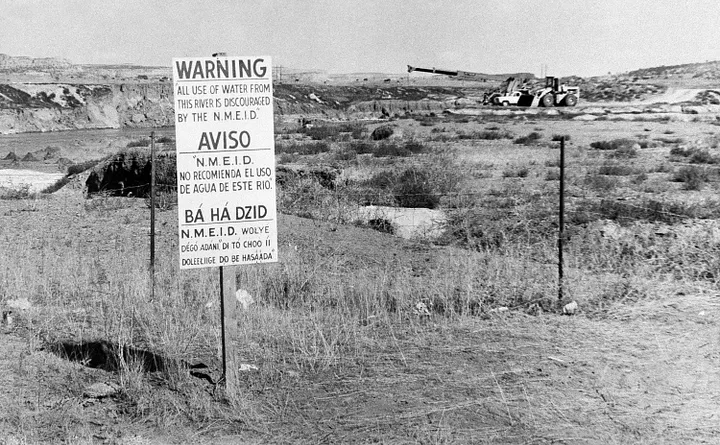Author: Kiersten Sundell

As a lot of people know and hate to talk about, the nuclear industry has a bit of an ugly history as far as uranium retrieval goes.
From 1944 to 1986, nearly thirty million tons of uranium ore were extracted from Navajo lands under leases with the Navajo Nation. This was partly for the civilian nuclear power industry, but largely for the military. The federal government insists that this mining was *mostly* consensual, but even if it was, irresponsible mining practices left millions of acres of Navajo land contaminated, resulting in slightly radioactive drinking water and airborne uranium particles.
The EPA has been planning cleanup efforts since the late 1990s, and they’ve investigated every known abandoned mine to identify which of them will be prioritized for cleanup due to proximity to residential areas and water resources.
When you’re trying to clean up an area where there is uranium contamination, there will undoubtedly be a little bit of uranium present, and a lot of stable, useless rock. Unfortunately, the uranium is usually embedded in the rock, and separating them can be expensive and time-consuming. This is why in the past, cleanup crews have just scrapped the whole lot and then stored it with other nuclear waste products to conceal the tiny bit of radiation present.
Preliminary cleanup efforts are estimated to cost around 2 billion dollars for the highest priority sites alone, all of which would come from American taxpayers. In an effort to reduce costs, a company called DISA has proposed a new method to clean up the sites, called high pressure slurry ablation, or HPSA.
It basically takes big pressure washers that are full of tiny bits of rock and sand and shoots them against surfaces that we know contain uranium. It’s like forced erosion. It results in the uranium and rock particles separating from each other and breaking down into tiny pieces, rendering the uranium easy to collect so that it can be sold to enrichers who will recycle it into new nuclear fuel.
High pressure slurry ablation is faster and less expensive than other remediation technologies, and while it is cleaning up the mine, it’s also recovering new uranium. The EPA is behind the method because it will help offset some of the cost of cleanup, so that not as much money would have to come from taxpayers. It also means that less of our natural resources will sit in a waste facility forever — they’ll actually get used.
The NRC is divided on this idea. Some commissioners see it as a new mining effort that is letting companies profit, which is why the technology hasn’t been implemented yet. I can kind of see both sides — it might look bad for a company to profit from cleaning up a tragedy, but from an environmentalist standpoint, it makes more sense to waste as little as possible.
To watch this full video, visit our TikTok page!


